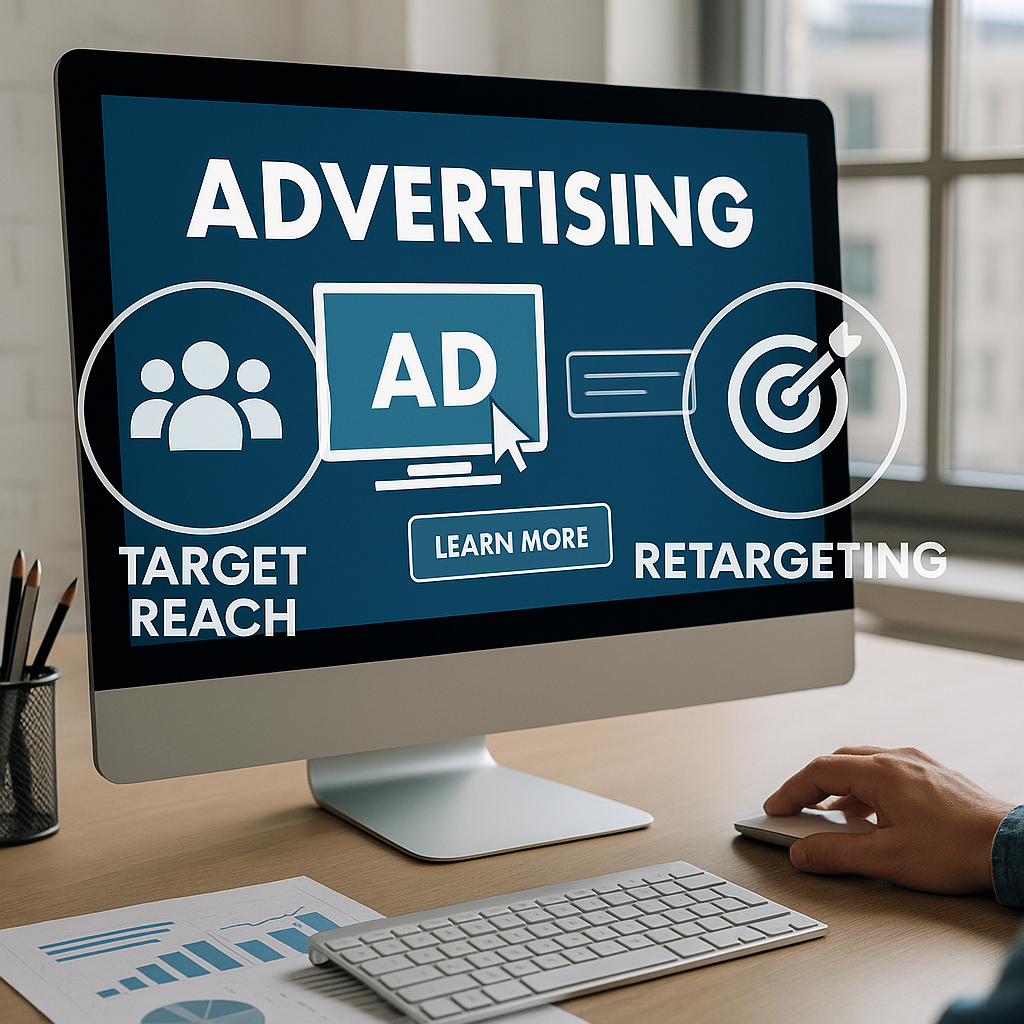
By Jenny Holly Hansen | WBN News | May 9, 2025
In the world of digital advertising, reaching your target audience is crucial—but engaging them effectively and driving conversions is the ultimate goal. That’s where retargeting comes into play. Retargeting is a strategic way to reconnect with audiences who have already interacted with your brand, keeping your business top of mind and increasing the likelihood of conversions.
Here’s how advertising, target reach, and retargeting come together to create powerful campaigns that deliver results.
Understanding Retargeting in Advertising
Retargeting, also known as remarketing, is a digital advertising strategy that serves ads to users who have previously interacted with your website, social media, or other online assets. These interactions might include:
- Browsing specific products.
- Adding items to a cart but not completing the purchase.
- Subscribing to your email list.
- Viewing certain pages but leaving without further action.
Retargeting works by using cookies or pixels to track user behavior and deliver tailored ads based on their previous interactions.
Why Retargeting is Essential
Retargeting is a vital part of any advertising strategy for several reasons:
- Boosts Conversion Rates: Many users don’t convert on their first interaction. Retargeting nurtures them through the decision-making process.
- Enhances Brand Recall: Seeing your brand repeatedly increases familiarity and trust, making users more likely to engage.
- Optimizes Ad Spend: Retargeting focuses on warm leads—users who have already shown interest—maximizing the efficiency of your budget.
- Complements Target Reach: While initial targeting captures new audiences, retargeting re-engages them, creating a cohesive strategy.
Combining Target Reach and Retargeting
1. Expand Your Initial Reach
Before you can retarget, you need to build a pool of users who have engaged with your brand. Target reach involves creating awareness and attracting potential customers through channels like:
- Social media ads.
- Search engine marketing (SEM).
- Display ads.
- Influencer collaborations.
2. Segment Your Audience
Segment your audience based on their behaviors and interactions. This allows for more personalized retargeting campaigns. Common segments include:
- Website Visitors: People who visited your site but didn’t convert.
- Cart Abandoners: Users who added items to their cart but didn’t complete the purchase.
- Engaged Social Media Users: Followers who interacted with your posts or ads.
- Email Subscribers: Contacts who opened your emails but didn’t take action.
3. Retarget with Personalized Messaging
Retargeting works best when the messaging is relevant and tailored to the audience’s previous actions. For example:
- Cart Abandoners: Serve ads reminding them of the items left behind, possibly with a discount or free shipping offer.
- Website Visitors: Show ads for products or services they viewed, with a call-to-action like “Learn More” or “Buy Now.”
- Engaged Users: Retarget with value-driven content, such as customer reviews or a free trial.
Effective Retargeting Strategies
1. Dynamic Retargeting
Dynamic retargeting automatically shows users ads featuring the exact products or services they interacted with. This level of personalization significantly increases engagement and conversions.
- Example: An e-commerce store shows users ads for the exact shoes they added to their cart but didn’t purchase.
2. Cross-Channel Retargeting
Reach your audience across multiple platforms to maximize exposure and engagement. For example:
- Serve retargeting ads on Facebook and Instagram to users who visited your website.
- Use Google Ads to show display ads to the same audience as they browse other sites.
3. Time-Based Retargeting
Adjust your messaging based on the time elapsed since the user’s initial interaction. For instance:
- Within 24 hours: Show ads encouraging immediate action, like “Hurry! Limited stock remaining.”
- After a week: Offer incentives like discounts or promotions to re-engage them.
4. Exclude Converted Users
Once a user completes the desired action (e.g., makes a purchase), exclude them from retargeting campaigns to avoid wasting budget. Instead, consider upselling or cross-selling strategies for these customers.
Measuring the Success of Retargeting Campaigns
To evaluate the effectiveness of your retargeting efforts, monitor these key metrics:
- Click-Through Rate (CTR): Indicates how engaging your retargeting ads are.
- Conversion Rate: Measures how many users take the desired action after seeing your retargeting ad.
- Cost-Per-Conversion (CPC): Helps assess the efficiency of your retargeting budget.
- Frequency: Tracks how often users see your ads. Avoid ad fatigue by limiting frequency.
Tools and Platforms for Retargeting
Several tools can help you implement retargeting campaigns effectively:
- Google Ads: Offers dynamic remarketing and display retargeting across the Google Display Network.
- Facebook Ads Manager: Allows retargeting to website visitors, social media users, and custom audiences.
- LinkedIn Ads: Ideal for B2B retargeting campaigns targeting specific professionals.
- AdRoll: Provides cross-channel retargeting capabilities across web, social, and email.
The Benefits of Combining Retargeting with Target Reach
- Stronger Funnel Performance: Initial targeting builds awareness, while retargeting converts interested users into customers.
- Higher ROI: Retargeting focuses on warm leads, reducing wasted spend and increasing conversion rates.
- Deeper Audience Insights: Monitoring retargeting campaigns provides valuable data about user behavior and preferences.
- Improved Customer Journey: A well-rounded strategy ensures users are engaged throughout their decision-making process.
Conclusion: Retargeting Completes the Advertising Cycle
Retargeting is the perfect complement to initial target reach in advertising. While broad targeting attracts new audiences, retargeting keeps your brand in front of users who are already familiar with it, nurturing them toward conversion.
By combining precise targeting with personalized retargeting strategies, you can create a seamless customer journey that drives engagement, builds trust, and boosts ROI. In the fast-paced world of digital advertising, retargeting isn’t just an option—it’s a necessity for sustained success.
Let’s Keep Talking:
Jenny is a business insurance broker with Waypoint Insurance.
She can be reached at 604-317-6755 or jhansen@waypoint.ca. Connect with Jenny on LinkedIn at https://www.linkedin.com/in/jenny-holly-hansen-365b691b/. Connect with Jenny at BlueSky: https://bsky.app/profile/jennyhollyhansen.bsky.social
Let’s Meet Up:
Jenny Holly Hansen is a cohost with Chris Sturges of the Langley Impact Networking Group. You are welcome to join us on Thursday’s from 4pm to 6pm at: Sidebar Bar and Grill: 100b - 20018 83A Avenue, Langley, BC V2Y 3R4
TAGS: #Jenny Holly Hansen #Advertising #Target Reach #Boost Conversation Rates #Brand Recall



